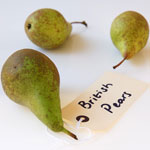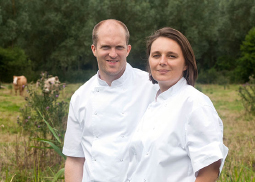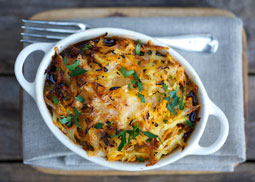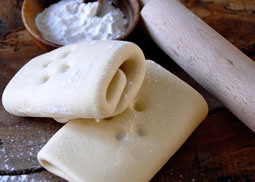Recent press
 Recipes – fresh garden peas please!
Recipes – fresh garden peas please!
When fresh garden peas appear on market stalls and my home-grown peas are ready to be harvested, it’s a wonderful reminder that the British summer is in full swing.I pick the first couple of swollen pods in secrecy so that I do not have to share them – the crisp, unique flavour to be found inside each pod is unique and delicious.
According to a recent TV programme on growing pea crops in Britain, farmers collaborate to harvest the peas as soon as they are ripe and their processing takes just a few hours from harvest to blanching and freezing the peas. Months of planning and hard work by farms and food producers brings this humble, yet incredible, vegetable in frozen form to our dining tables.
This is all down to a particular enzyme in peas that affects them once they are harvested. Freshly picked peas taste sweeter and better than those that are just a few days old. For this reason frozen peas are as close as one can get to the real thing unless you have your own kitchen garden. As a matter of fact, peas are very easy to grow as they do not need a very big space and are not prone to disease.
TASTE TEST
There are plenty ways to savour fresh garden peas. One of my favourite recipes is early-Hertfordshire pea and feta crush (www.britishlarder.co.uk). This recipe is made with very tender, fresh peas and so do not require cooking at all – simply lightly crush them with good olive oil, a generous amount of seasoning and a light addition of sumac.
Here are a few more of my favourite recipes using fresh garden peas.
- PEA AND SLOW-COOKED HAM TARTS
- POTTED PIGS’ CHEEKS WITH PEA CUSTARD
- CHILLED PEA SOUP WITH PARMESAN CREAM AND SOFT-BOILED GULL’S EGGS

 Peared up
Peared up
(16 October 2009 16:11)
The pear is one of the most versatile additions to a recipe as it mixes well with a wide variety of ingredients. Madalene Bonvini-Hamel, founder of The British Larder, reports
One of the best autumn treats is the humble pear. There is a vast number of varieties on the market, but most have been imported; somehow we seem to have forgotten our own fruits.
For example, some might argue that the British Conference pear is not the prettiest or most valued fruit. However, it makes a fantastic and interesting cooking ingredient.
I had an enormous amount of fun preparing these spectacular pear recipes. Some are old friends that I have dusted off; others have been adapted to make use of the fruit.
The pear mixes well with a wide variety of ingredients and as the flavours mingle, the character changes. This makes the pear even more valuable to me as a chef, as the possibilities are endless.
The thing I like most about the pear is that it does not matter at which stage of ripeness it is eaten. Furthermore, it can be used as a cooking ingredient while hard or soft.
I find the Conference pear, with its russet skin and elongated shape, very attractive. It is an early variety, and the flesh is hard and perfect for cooking. I like to grate a Conference pear, skin and flesh, into muffin batter as it provides both fibre and moisture.
Later in the season, a more fragrant pear is available, when Williams and Comice varieties ripen. I love the texture and graininess of the flesh, together with their aromatic scent.
The Williams pear, with its golden yellow tinge, is juicy and sweet with firm flesh. It is perfect for cooking but once ripe it makes a pleasant eating pear. The Comice, a French variety, is classed by many as the superior eating pear, with its tender, aromatic, rich buttery flavour and texture. I find it perfect for making sorbet and parfaits with attitude.
A Rich Heritage
The pear has been cultivated for 4,000 years. It used to be considered superior to the apple and outnumbered it in terms of the varieties grown.
The Domesday Book contains references to the cultivation of pears as boundary markers, and Shakespeare mentioned the first important English pear, the Wardon (a cooking variety), in his work. The number of varieties grown in Britain by the late 19th century peaked at over 700. Today, however, the Conference pear accounts for the vast majority of commercially grown pears in Britain.
At Brogdale Farm in Kent, home of the National Fruit Collection, they are working to protect old varieties of fruit and prevent them from dying out. The site includes more than 3,500 named pear, apple, plum, cherry, bush fruit, vine and cobnut cultivars, and to visit it is a humbling experience. The work they do is incredibly important to Britain and should protect the heritage and future of the pear.
Here are a few recipes using the humble pear:
- Pear, Quail, Walnut and Blue Cheese Salad
- Camomile Smoked Pear Pastilles
- Tamarind Pears with Creamed Tapioca and Toffee Pear Lollipops
- Schezuan Pear Broths with Mackerel Dumplings
- Healthy Bran, Conference Pear and Bullace Breakfast Muffins
- Fine Pear Tart



